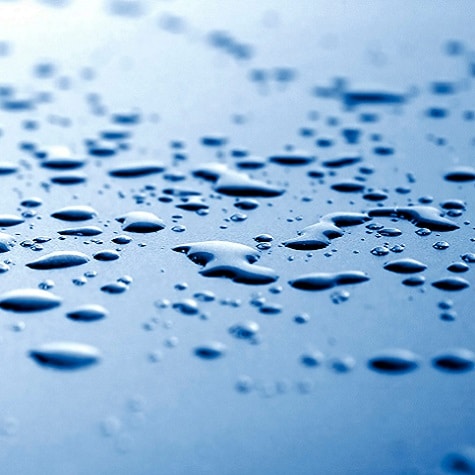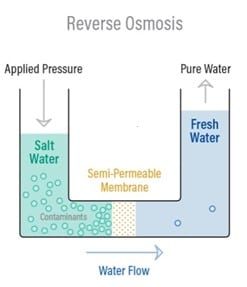
Hard Water Spot Remover Options When it Comes To Your Windows
For building occupants and visitors, the appearance of outdoor windows and glass is one of the first indicators of how the facility cares for the property and values its brand. However, crystal clear windows are much more than just a brand indicator. In order to prevent window degradation, maintain a healthier indoor environment and contribute to a building’s heating efficiency, regular and preventative window cleaning care is a must. This approach includes not only frequent window cleaning, but also an effective, easy-to-use solution for a hard water spot remover.
The Risk of Unaddressed Hard Water Spots
Water hardness or softness is measured using grains per gallon (gpg), where one grain is equal to 0.002 ounces of calcium carbonate dissolved in 1 gallon of water.
- 0–3 gpg is considered soft water.
- 5–7 gpg is considered moderate and ideal.
- >7.5 gpg is regarded as hard water and should be treated with a water softener.
Undissolved rocks and minerals naturally occur in water and when this unfiltered water comes in contact with glass, it can leave behind white mineral stains (hard water spots) when the water dries, and the calcium deposits or lime scale remain.
Beyond giving the appearance of dirty windows, these lingering minerals and particles can enter the glass pores, leading to etching and scratching which over time can weaken the integrity of the glass. Left unaddressed, eventually you’ll see structural damage to the window, which comes with a heavy price tag if the damage warrants a replacement.
Hard water stains can also inhibit natural light from entering the facility. The cleaner the windows – inside and out – the more natural light, specifically ultraviolet light, enters into the space. This type of light is a disinfectant that kills bacteria that is present in your facility. Dirty or hard water stained windows can reduce the amount of natural light coming into your facility by about 40%.
Additionally, by cleaning and maintaining windows regularly, you can minimize energy waste and lower the load on the facility’s HVAC equipment. According to the Department of Energy, heat gains and losses through windows can account for 25-30 percent of HVAC-related energy usage.
Working with Hard Water Spot Removers
Maintaining outdoor window cleaning and hard water spot removal will save you money down the road. However, for facility managers, building service contractors and professional window washers, the challenge is how to keep outdoor windows clean and free of hard water spots without increasing costs and labor.
The most effective way to keep your windows spotless is through preventative maintenance, but you can’t set the clock back. If you currently have spots on your outdoor windows, hard water spot removers will temporarily fix the appearance of your windows.
Using a hard water spot remover is considered a short-term solution because the spots will return if you’re not addressing the source of the issue. That said, there are certain scenarios when a professional glass cleaning solution for removing hard-water stains, rust, mineral deposits, lime scale and soap scum works quickly and efficiently to scrub stains without harming the window surface.
Another challenge is that this shorter term solution may also compound the problem, depending on the scenario, as spot removal solutions add more products (equipment and detergents) to your current toolbox of window cleaning tools. In addition, when cleaning a larger surface area these removers can:
- Increase the labor needed to complete the job (and associated costs).
- Increase the risks associated with ladder use.
- Increase the time needed to cover a larger surface area, which is often impractical, especially during rainy and snowy seasons.
Alternatively, the best way to manage hard water spots long-term is to implement preventative measures that will reduce cleaning time, promote increased worker safety and minimize the recurrence of stubborn hard water spots.
Long Term Hard Water Spot Remover Alternatives
From promoting a positive first impression to protecting window integrity, windows clear of hard water spots are essential to the operational and business goals of nearly any facility. Working with facilities and window cleaners daily, we recommend the following professional window cleaning solutions to incorporate into your cleaning protocols to combat hard water stains, while also increasing the speed and efficiency of window cleaning:
1. Pure Water Technology
 When using unfiltered water, you’re cleaning with minerally-rich water that once it dries on the windows, leaves behind the impurities – the culprits of hard water spots and streaks. Alternatively, pure water window cleaning involves the use of a simple filtration system to remove naturally occurring impurities from the water during the cleaning process.
When using unfiltered water, you’re cleaning with minerally-rich water that once it dries on the windows, leaves behind the impurities – the culprits of hard water spots and streaks. Alternatively, pure water window cleaning involves the use of a simple filtration system to remove naturally occurring impurities from the water during the cleaning process.
When pure water technology is used in window cleaning, when the water hits the window, the water immediately wants to try and return to its natural state (one with impurities). To do this, the pure water looks for dirt, dust and other particles to which it can adhere. Once the two elements meet, they are bonded together for easy removal during the rinse step of the process. During rinsing, with no dirt available for the pure water to bond with, the water will simply evaporate to leave a clean, spot-free, streak-free surface.
2. Waterfed Window Cleaning Poles
Waterfed window cleaning poles are designed to deliver pure water to the window surface. The purified water is pumped through a long pole with a brush attachment, allowing the user to scrub and rinse the window from the safety of the ground. Waterfed poles are particularly effective for hard-to-reach windows or for buildings with multiple stories, where traditional window cleaning methods may be difficult or dangerous.
3. Microfiber Window Cleaning Cloths and Pads
When used for cleaning windows, microfiber cloths can absorb water and cleaning solution more effectively than traditional cotton or paper towels. When it comes to preventing hard water spots, microfiber cloths can help by absorbing the water on the window surface quickly to prevent the water from evaporating and leaving behind minerals that cause hard water spots. Microfiber cloths are such an effective cleaning tool that you can avoid using harsh window cleaning chemicals, which can also contribute to the buildup of hard water spots.
Other Tips to Avoid Using a Hard Water Spot Remover
In addition to selecting innovative window cleaning equipment, there are some other general preventative measures to keep hard water stains at bay:
- As with any professional cleaning program, proper training on window cleaning tools and protocols is a critical component of achieving the desired results. Training should also include explaining the safety and health benefits of any new commercial cleaning equipment investment.
- Evaluate other factors that may be leading to window spots. For example, outdoor sprinklers may be spewing hard water on to clean surfaces.
- Establish a window cleaning schedule that addresses hard water spot removal and other debris before it has a chance to bake in.
Sourcing a Professional Outdoor Window Cleaning Solution
Understanding that clean windows outside a facility are much more than an aesthetic goal, sourcing the right commercial window washing equipment is critical. Click here to read about what to look for when sourcing outdoor window cleaning tools.
When you’re ready to take the next step towards faster, safer and cleaner window washing operations, contact us for a free demo of our pure water cleaning system.

